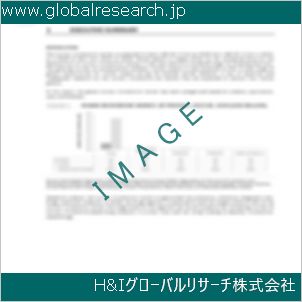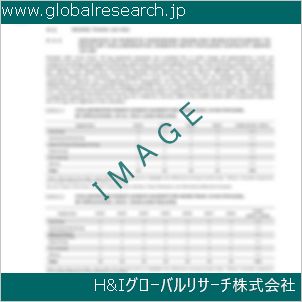Table of Contents
1 Industry Overview of 1,4-Butanediol
1.1 Definition and Specifications of 1,4-Butanediol
1.1.1 Definition of 1,4-Butanediol
1.1.2 Specifications of 1,4-Butanediol
1.2 Classification of 1,4-Butanediol
1.3 Applications of 1,4-Butanediol
1.3.1 Nuclear Application
1.3.2 Non-Nuclear Application
1.4 Industry Chain Structure of 1,4-Butanediol
1.5 Industry Overview and Major Regions Status of 1,4-Butanediol
1.5.1 Industry Overview of 1,4-Butanediol
1.5.2 Global Major Regions Status of 1,4-Butanediol
1.6 Industry Policy Analysis of 1,4-Butanediol
1.7 Industry News Analysis of 1,4-Butanediol
2 Manufacturing Cost Structure Analysis of 1,4-Butanediol
2.1 Raw Material Suppliers and Price Analysis of 1,4-Butanediol
2.2 Equipment Suppliers and Price Analysis of 1,4-Butanediol
2.3 Labor Cost Analysis of 1,4-Butanediol
2.4 Other Costs Analysis of 1,4-Butanediol
2.5 Manufacturing Cost Structure Analysis of 1,4-Butanediol
2.6 Manufacturing Process Analysis of 1,4-Butanediol
3 Technical Data and Manufacturing Plants Analysis of 1,4-Butanediol
3.1 Capacity and Commercial Production Date of Global 1,4-Butanediol Major Manufacturers in 2023
3.2 Manufacturing Plants Distribution of Global 1,4-Butanediol Major Manufacturers in 2023
3.3 R&D Status and Technology Source of Global 1,4-Butanediol Major Manufacturers in 2023
3.4 Raw Materials Sources Analysis of Global 1,4-Butanediol Major Manufacturers in 2023
4 Capacity, Production and Revenue Analysis of 1,4-Butanediol by Regions, Types and Manufacturers
4.1 Global Capacity, Production and Revenue of 1,4-Butanediol by Regions 2019-2024
4.2 Global and Major Regions Capacity, Production, Revenue and Growth Rate of 1,4-Butanediol 2019-2024
4.3 Global Capacity, Production and Revenue of 1,4-Butanediol by Types 2019-2024
4.4 Global Capacity, Production and Revenue of 1,4-Butanediol by Manufacturers 2019-2024
5 Price, Cost, Gross and Gross Margin Analysis of 1,4-Butanediol by Regions, Types and Manufacturers
5.1 Price, Cost, Gross and Gross Margin Analysis of 1,4-Butanediol by Regions 2019-2024
5.2 Price, Cost, Gross and Gross Margin Analysis of 1,4-Butanediol by Types 2019-2024
5.3 Price, Cost, Gross and Gross Margin Analysis of 1,4-Butanediol by Manufacturers 2019-2024
6 Consumption Volume, Consumption Value and Sale Price Analysis of 1,4-Butanediol by Regions, Types and Applications
6.1 Global Consumption Volume and Consumption Value of 1,4-Butanediol by Regions 2019-2024
6.2 Global and Major Regions Consumption Volume, Consumption Value and Growth Rate of 1,4-Butanediol 2019-2024
6.3 Global Consumption Volume and Consumption Value of 1,4-Butanediol by Types 2019-2024
6.4 Global Consumption Volume and Consumption Value of 1,4-Butanediol by Applications 2019-2024
6.5 Sale Price of 1,4-Butanediol by Regions 2019-2024
6.6 Sale Price of 1,4-Butanediol by Types 2019-2024
6.7 Sale Price of 1,4-Butanediol by Applications 2019-2024
6.8 Market Share Analysis of 1,4-Butanediol by Different Sale Price Levels
7 Supply, Import, Export and Consumption Analysis of 1,4-Butanediol
7.1 Supply, Consumption and Gap of 1,4-Butanediol 2019-2024
7.2 Global Capacity, Production, Price, Cost, Revenue, Supply, Import, Export and Consumption of 1,4-Butanediol 2019-2024
7.3 USA Capacity, Production, Price, Cost, Revenue, Supply, Import, Export and Consumption of 1,4-Butanediol 2019-2024
7.4 EU Capacity, Production, Price, Cost, Revenue, Supply, Import, Export and Consumption of 1,4-Butanediol 2019-2024
7.5 China Capacity, Production, Price, Cost, Revenue, Supply, Import, Export and Consumption of 1,4-Butanediol 2019-2024
7.6 Japan Capacity, Production, Price, Cost, Revenue, Supply, Import, Export and Consumption of 1,4-Butanediol 2019-2024
8 Major Manufacturers Analysis of 1,4-Butanediol
8.1 Manufacturer One
8.1.1 Company Profile
8.1.2 Product Picture and Specifications
8.1.2.1 Type I
8.1.2.2 Type II
8.1.2.3 Type III
8.1.3 Capacity, Production, Price, Cost, Gross and Revenue
8.1.4 Contact Information
8.2 Manufacturer Two
8.2.1 Company Profile
8.2.2 Product Picture and Specifications
8.2.2.1 Type I
8.2.2.2 Type II
8.2.2.3 Type III
8.2.3 Capacity, Production, Price, Cost, Gross and Revenue
8.2.4 Contact Information
8.3 Manufacturer Three
8.3.1 Company Profile
8.3.2 Product Picture and Specifications
8.3.2.1 Type I
8.3.2.2 Type II
8.3.2.3 Type III
8.3.3 Capacity, Production, Price, Cost, Gross and Revenue
8.3.4 Contact Information
8.4 Manufacturer Four
8.4.1 Company Profile
8.4.2 Product Picture and Specifications
8.4.2.1 Type I
8.4.2.2 Type II
8.4.2.3 Type III
8.4.3 Capacity, Production, Price, Cost, Gross and Revenue
8.4.4 Contact Information
8.5 Manufacturer Five
8.5.1 Company Profile
8.5.2 Product Picture and Specifications
8.5.2.1 Type I
8.5.2.2 Type II
8.5.2.3 Type III
8.5.3 Capacity, Production, Price, Cost, Gross and Revenue
8.5.4 Contact Information
…
9 Marketing Trader or Distributor Analysis of 1,4-Butanediol
9.1 Marketing Channels Status of 1,4-Butanediol
9.2 Traders or Distributors with Contact Information of 1,4-Butanediol by Regions
9.3 Ex-work Price, Channel Price and End Buyer Price Analysis of 1,4-Butanediol
9.4 Regional Import, Export and Trade Analysis of 1,4-Butanediol
10 Industry Chain Analysis of 1,4-Butanediol
10.1 Upstream Major Raw Materials Suppliers Analysis of 1,4-Butanediol
10.1.1 Major Raw Materials Suppliers with Contact Information Analysis of 1,4-Butanediol
10.1.2 Major Raw Materials Suppliers with Supply Volume Analysis of 1,4-Butanediol by Regions
10.2 Upstream Major Equipment Suppliers Analysis of 1,4-Butanediol
10.2.1 Major Equipment Suppliers with Contact Information Analysis of 1,4-Butanediol
10.2.2 Major Equipment Suppliers with Product Pictures Analysis of 1,4-Butanediol by Regions
10.3 Downstream Major Consumers Analysis of 1,4-Butanediol
10.3.1 Major Consumers with Contact Information Analysis of 1,4-Butanediol
10.3.2 Major Consumers with Consumption Volume Analysis of 1,4-Butanediol by Regions
10.4 Supply Chain Relationship Analysis of 1,4-Butanediol
11 Development Trend of Analysis of 1,4-Butanediol
11.1 Capacity, Production and Revenue Forecast of 1,4-Butanediol by Regions and Types
11.1.1 Global Capacity, Production and Revenue of 1,4-Butanediol by Regions 2024-2029
11.1.2 Global and Major Regions Capacity, Production, Revenue and Growth Rate of 1,4-Butanediol 2024-2029
11.1.3 Global Capacity, Production and Revenue of 1,4-Butanediol by Types 2024-2029
11.2 Consumption Volume and Consumption Value Forecast of 1,4-Butanediol by Regions, Types and Applications
11.2.1 Global Consumption Volume and Consumption Value of 1,4-Butanediol by Regions 2024-2029
11.2.2 Global and Major Regions Consumption Volume, Consumption Value and Growth Rate of 1,4-Butanediol 2024-2029
11.2.3 Global Consumption Volume and Consumption Value of 1,4-Butanediol by Types 2024-2029
11.2.4 Global Consumption Volume and Consumption Value of 1,4-Butanediol by Applications 2024-2029
11.3 Supply, Import, Export and Consumption Forecast of 1,4-Butanediol
11.3.1 Supply, Consumption and Gap of 1,4-Butanediol 2024-2029
11.3.2 Global Capacity, Production, Price, Cost, Revenue, Supply, Import, Export and Consumption of 1,4-Butanediol 2024-2029
11.3.3 USA Capacity, Production, Price, Cost, Revenue, Supply, Import, Export and Consumption of 1,4-Butanediol 2024-2029
11.3.4 EU Capacity, Production, Price, Cost, Revenue, Supply, Import, Export and Consumption of 1,4-Butanediol 2024-2029
11.3.5 China Capacity, Production, Price, Cost, Revenue, Supply, Import, Export and Consumption of 1,4-Butanediol 2024-2029
11.3.6 Japan Capacity, Production, Price, Cost, Revenue, Supply, Import, Export and Consumption of 1,4-Butanediol 2024-2029
12 New Project Investment Feasibility Analysis of 1,4-Butanediol
12.1 New Project SWOT Analysis of 1,4-Butanediol
12.2 New Project Investment Feasibility Analysis of 1,4-Butanediol
13 Conclusion of the Global 1,4-Butanediol (CAS 110-63-4) Industry 2024 Market Research Report
| ※参考情報 1,4-ブタンジオール(1,4-Butanediol、CAS番号110-63-4)は、重要な有機化合物の一つであり、化学式はC4H10O2です。この化合物は、二価のアルコールであり、2つのヒドロキシル基(-OH)を持つため、さまざまな化学反応に利用されます。 1,4-ブタンジオールは、無色の粘性液体として存在し、甘い香りを持っています。また、水に溶けやすく、熱や光に対して安定した性質を持っています。この化合物は、主に工業用途で広く使用されています。 1,4-ブタンジオールにはいくつかの特徴があります。一つは、その高い親水性です。水に溶けやすく、他の溶剤とも相互作用しやすい性質を持っているため、多くの反応の媒介や溶媒として利用されています。また、低い揮発性を持ち、比較的安全性が高いとされていますが、皮膚や眼に対して刺激性があるため、取り扱いには注意が必要です。 この化合物には、さまざまな種類や製造法がありますが、一般的には、プロピレンオキシドやアセトアルデヒドを原料として化学合成によって製造されます。製造プロセスとしては、いくつかのステップに分かれることが多く、その中にはエポキシ化や縮合反応が含まれます。 1,4-ブタンジオールの用途は非常に多岐にわたります。最も一般的な用途の一つは、ポリウレタンの製造です。ポリウレタンは、家具や車両、靴、断熱材など、さまざまな製品に使用されており、その柔軟性や耐久性から非常に人気があります。また、1,4-ブタンジオールは、ポリエステルの前駆体としても利用されており、フィルムや繊維などの製造にも向いています。さらに、医療分野や化粧品産業にも利用され、例えばドラッグデリバリーシステムや保湿剤としての機能が注目されています。 環境への影響や持続可能性が重要視される現代において、1,4-ブタンジオールの生産方法も進化しています。特に、バイオマスを原料とした生産方法が模索されており、これにより化石資源の使用を削減するための努力がなされています。これに関連する技術としては、バイオ発酵プロセスや酵素を利用した合成プロセスがあり、これらは持続可能な化学の可能性を広げています。 加えて、1,4-ブタンジオールはその性質を活かした新しい応用が日々模索されています。特に、エネルギー貯蔵や新素材の開発に関する研究が進んでおり、これにより新たな産業分野での活用が期待されています。 以上のように、1,4-ブタンジオールは、広範囲にわたる用途と特性を持つ重要な化合物です。その利用法や合成技術の進化により、今後もさまざまな分野での活用が期待され、持続可能な社会の実現に寄与することが見込まれています。 |
❖ 免責事項 ❖
http://www.globalresearch.jp/disclaimer












